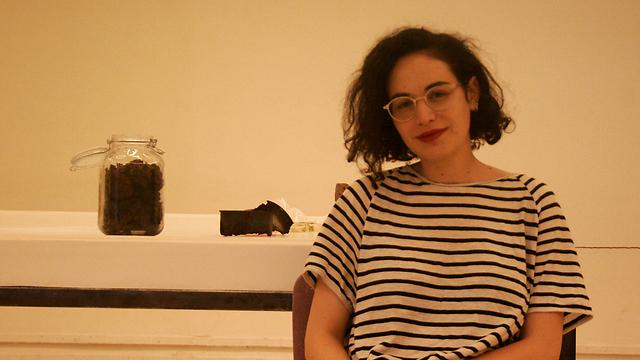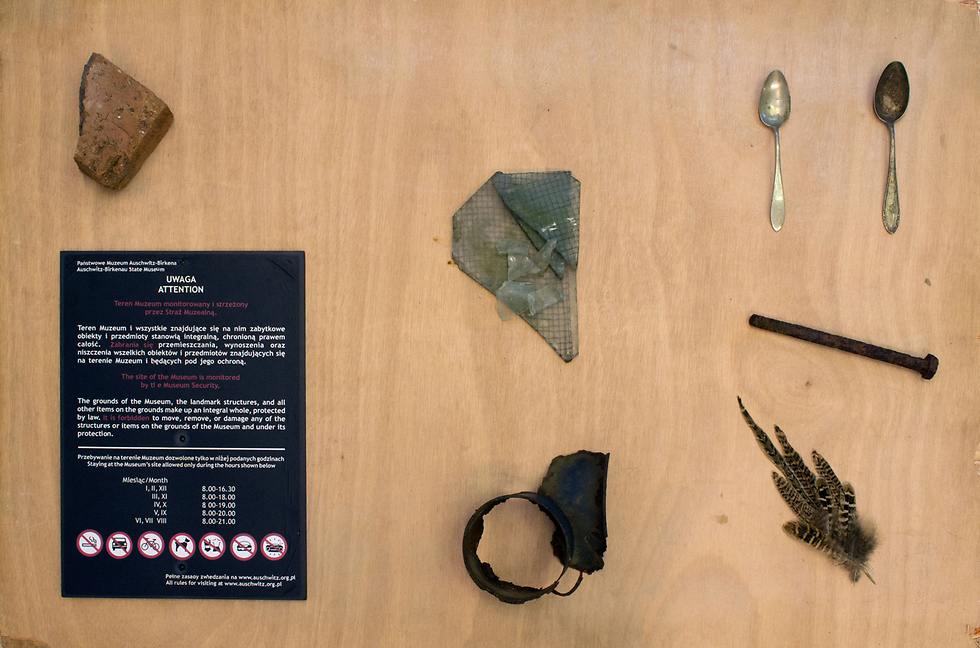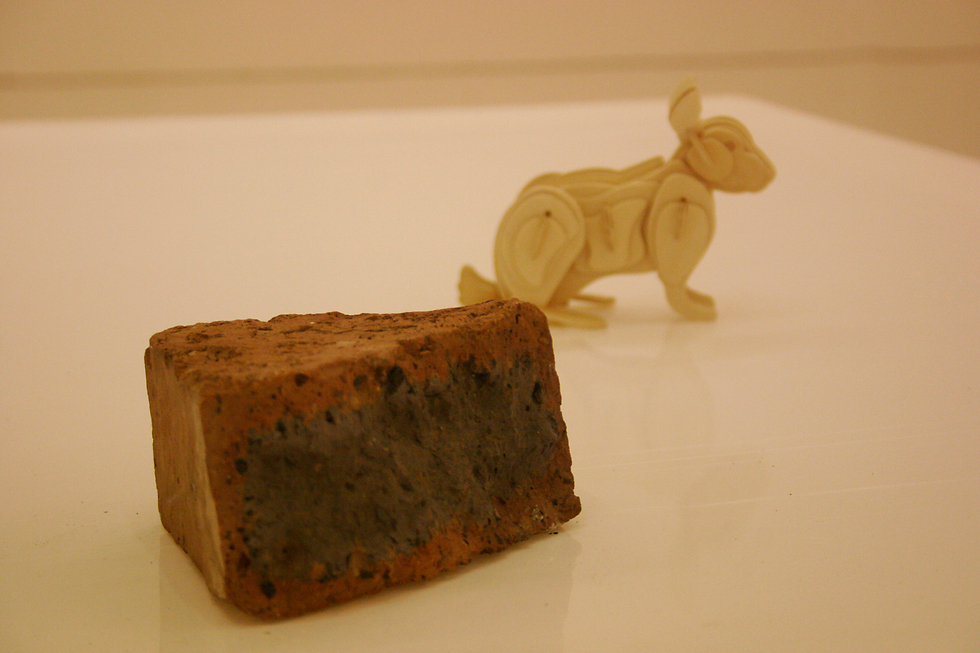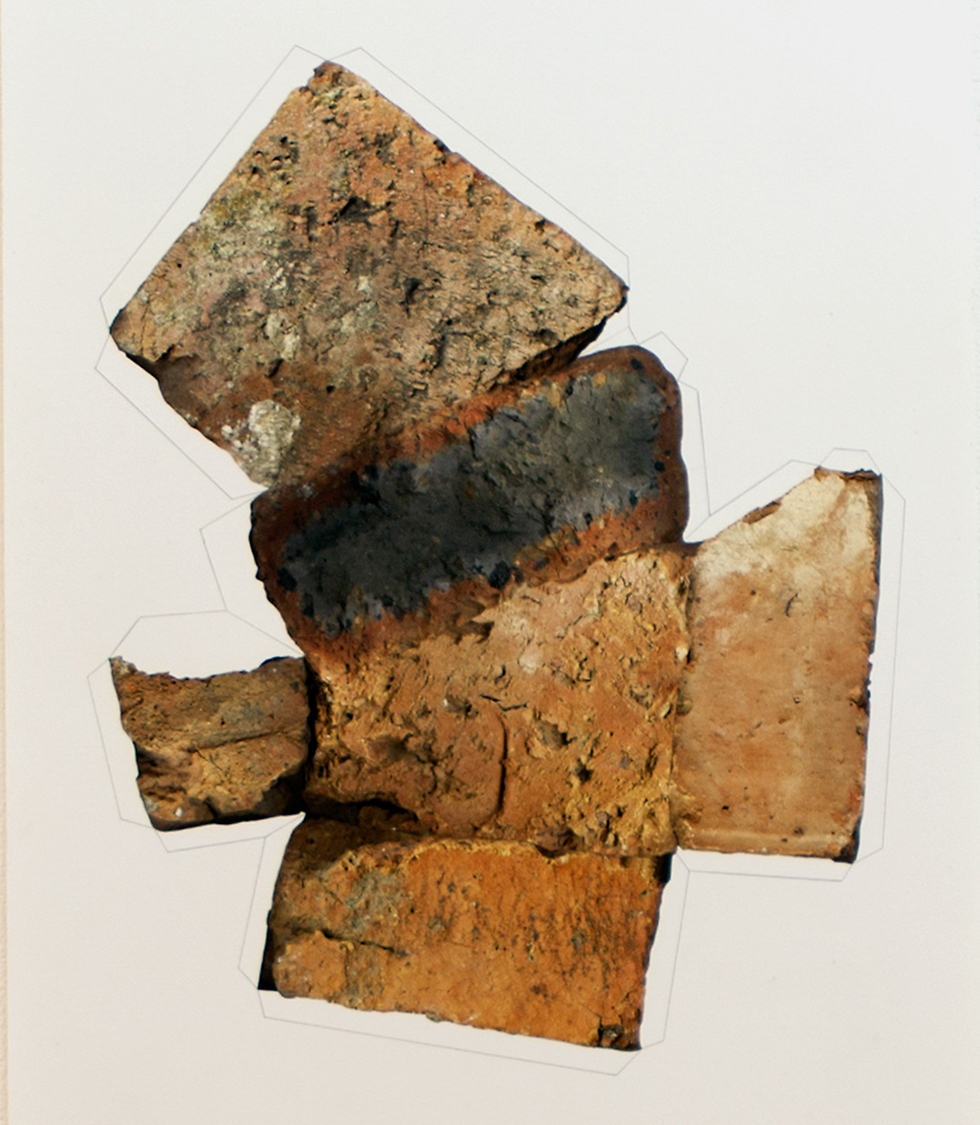
Israeli student steals items from Auschwitz for art exhibit
Rotem Bides, whose grandparents survived the Holocaust, says she took several relics from the death camp for her final project at the Beit Berl College’s Faculty of Art, including a sign warning visitors not to remove anything from the camp’s grounds. After learning of the theft, the Auschwitz-Birkenau Museum says it plans to file an official complaint against her with the Polish public prosecutor general.
Rotem Bides visited the remains of the Auschwitz-Birkenau death camp six times, and each time she felt like she had left a part of herself there, or perhaps the other way around.
The 27-year-old student, who has been preoccupied with the Holocaust for years, has sparked a controversy both in Israel and abroad with her final project at the Beit Berl College’s Faculty of Art, which includes samples she collected without permission from the Auschwitz Museum: Shards of glass, small bowls, a metal screw, soil and even a sign clearly warning visitors not to steal anything from the camp’s grounds.
After learning of the theft, the Auschwitz-Birkenau Memorial and Museum said it planned to file an official complaint against Bides with the Polish public prosecutor general. The Beit Berl College decided to remove the exhibition and summon the student for a disciplinary hearing. The college issued a statement, saying that stealing items from the former death camp pointed to the student's insensitivity towards the public and a failure to understand the criminal meaning of the act.
Bides’ late grandparents were Holocaust survivors. She says one of her grandfathers survived Auschwitz, the other one served in the Red Army, and her two grandmothers also managed to escape the horror alive. Like in many families, the Holocaust was hardly mentioned in her home, and there are still things she doesn’t know. But the somber mood, she says, was always there, prompting her to investigate what had happened.
She visited Krakow as part of a student exchange program, knowing that was the place where she would find the raw material for her final art project at Beit Berl. “I always felt my raw material was in Poland, not in Israel,” she said as she began working on her exhibition.
‘What will remain after living proof is gone?’
The exhibition aims to shock its visitors from the very first moment, with a tube connected to the wall, containing Bides’ blood. In the middle of the room, there is a large table with different objects on it, some taken from Auschwitz-Birkenau and others related to her personal stories. They include scorched soup bowls, a large screw, pieces of glass, water taken from the river the victims’ ashes were thrown into, and a sign explaining the site’s importance and warning visitors not to remove anything.
Other items presented in the exhibition include spoons, a rabbit’s leg from Poland, rabbit skin glue she received from her instructor, Michal Neeman, a wooden rabbit, etc. Bides says she also took a tablespoon from Auschwitz, but unfortunately lost it.

She is well aware of the fact that she broke the law and that her act raises moral questions too, but says she had a choice whether to accept the rules of a place where all basic rules had been violated. She is concerned about the fact that there will be no more survivors left in a few years, and the theft—beyond its artistic statement—provides an answer to a question she has been asking herself: What will remain of the memory when the living proof is gone?
“Of course she’s afraid,” one of her fellow students says, “but she feels it’s her mission, because she deals with this issue all the time, both in life and in her art. Presenting these objects here in Israel, as the granddaughter of an Auschwitz survivor, is part of her investigation. She places it under the banner of art and asks questions.”
This isn’t the first time Israelis make headlines for stealing exhibits from Auschwitz. Moti Posloshani, a senior official at the Herzliya municipality, and his wife Dominique were convicted of stealing items from the camp’s museum several years ago. The couple, who are related to Holocaust survivors, said they had taken rusted cutlery and scissors as a souvenir. They were arrested at the Krakow airport, and a Polish court sentenced them to a suspended jail sentence and ordered them to pay a financial penalty.
“I think the theft of the ‘Arbeit macht frei’ sign made our story bigger,” Posloshani said at the time, after being forced to leave his job at the municipality. “People take all kinds of things from there, but we’re sorry. It was a mistake.”
Bides has no regrets. “I felt it was something I had to do,” she said Sunday. “Millions of people were murdered based on the moral laws of a certain country, under a certain regime. And if these are the laws, I can go there and act according to my own laws. The statement I'm making here is that laws are determined by humans, and that morality is something that changes from time to time and from culture to culture.
“These are the things I want to deal with. I am a third generation to the Holocaust, but I’m not saying I’m allowed to do it because my grandfather was in Auschwitz. I’m simply asking the questions. I’m concerned that after all the survivors are gone, the Holocaust will turn into a myth, something that cannot be perceived.”
‘That’s her way of doing things’
Bides’ academic advisor for her final project was painter Michal Ne’eman, who won the Israel Prize for Plastic Arts in 2014.
“I guide the fourth-year students, and that’s where I met Rotem,” she said Sunday. “I was extremely interested in her work. Rotem leaves no stone unturned in the field she is exploring or investigating.
“The interesting thing is she brings it to an extreme place in which she feels the need to shock herself before shocking us. She isn’t manipulative in the uninteresting way: wanting money, success or publicity. I’m referring to the Auschwitz theft of course. She takes pieces of the land, samples the water, finds a piece of iron that used to be a spoon or a knife, which she sees as something important. Because it’s a material—in plastic arts we deal with material—which is directly related to someone who lived at the time and experienced or didn’t experience the horror. That’s her way of doing things.”
Whether artistic or not, it’s an extreme statement.
“She has very extreme work, in which she uses a process of extracting blood from her body. So here, she’s bleeding in a different sense. What she’s doing isn’t simple. She’s trying to remove dust, makeup, something that has become stagnated and senseless. In other words, she wants to touch the exposed nerve, the events that have piled up under the title of the Holocaust.
“Out of an understanding and appreciation of what she’s trying to do, I didn’t think there was anything wrong with it. On the other hand, I thought her effort to remove the barrier separating us from the initial aversion related to the events of World War II, for Jews specifically, is one of the things that art does sometimes.”
Nevertheless, it’s theft.
“Let’s say she didn’t steal, but took a piece of evidence through which she can be part of it. It’s neither devious nor manipulative. The way I see it, she succeeds in creating a unique encounter between art and an event that has passed and has been wrapped in a lot of words, symbols and representations.”
According to Dr. Gabriel Klasmer, dean of the Beit Berl College’s Faculty of Arts—Hamidrasha, “The question of the school’s role is raised here on a nearly daily basis. As one of the oldest art institutions in Israel for art education, we keep reaching the same conclusions that have hardly ever changed in about 71 years. Every time a conflict arises, we go back to the fact Hamidrasha is committed to creative and cultural freedom, to different opinions and perceptions, to multiple voices and pluralism. Hamidrasha is a home for art. That’s where our power lies and that’s what we do. It’s both rich and complicated simultaneously.
“Art will always strive to be in no man’s land. On the one hand, Rotem’s work violates legal and moral principles, and on the other hand, it brings the Holocaust from the Jewish ethos to the personal level. I don’t know if there’s a criminal aspect in the student’s work, or if the exhibits were indeed stolen or are just presented as stolen, and it’s not my job. We are leaving this matter to the relevant authorities,” he added.
The Auschwitz-Birkenau Museum’s spokesman, Bartosz Bartyzel, told Yedioth Ahronoth on Monday that the museum expected Israel’s state attorney to intervene and return the items. “We plan to report the matter both to the Polish Public Prosecutor General and to the Israeli ambassador in Poland,” he said.
“It’s painful and outrageous. The Auschwitz-Birkenau memorial is a protected site that stands as testimony of the tragedy of the Holocaust and World War II, which should be preserved for the next generations. It’s hard to imagine theft being justified in any way, even through art, which can be seen as an attempt to gain publicity,” the museum said in a statement.
Bartyzel stressed that it was difficult to confirm from the pictures whether the displayed items really came from the camp, as Bides claims.
Itamar Eichner contributed to this report.














